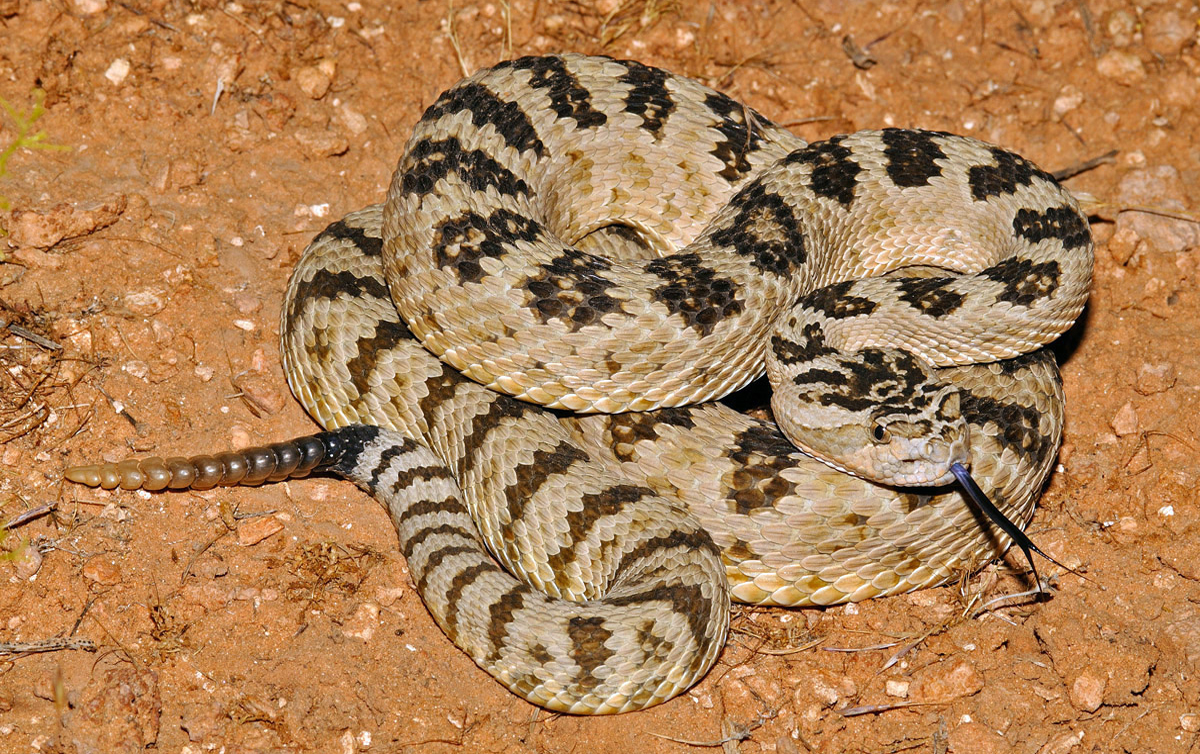
Rattlesnake safety tips
Give snakes plenty of space
By Mark Hadley
Rattlesnakes often strike fear in the hearts of people. But they shouldn’t. Knowing some rattlesnake safety tips, a little about the animal and doing, and a few simple things like keeping your distance and not harassing a snake can go a long way to keeping you safe.
Kevin Wheeler, biologist with the Division of Wildlife Resources, says rattlesnakes in Utah are on the move right now, looking for water and rodents after emerging from their dens in May.
Wheeler says the snakes will likely have to travel more to find food this year.
“Drought conditions have reduced Utah’s rodent population, so snakes will be roaming more, looking for rodents,” Wheeler said. “Because the snakes will be active, there’s a greater chance you’ll see one in the wild this year.”
So if you see a rattlesnake in the wild, what should you do?
“Don’t approach it,” Wheeler says. “Give it plenty of space, and leave it alone. Respect the snake and it will respect you.”
Wheeler says that most people who are bitten by rattlesnakes are bitten while harassing or toying with a snake or trying to kill it. Like most animals, rattlesnakes fear humans and will do anything they can to avoid us.
“That changes if a snake thinks it’s threatened and there’s no way to escape,” he says. “In that case, the snake will often strike to protect itself.”
Respecting the snake and giving it plenty of space are the keys to avoiding problems.
You can get more rattlesnake safety tips online. Southwest Partners also provides rattlesnake safety information. A copy of the organization’s free “Living with Venomous Reptiles” brochure is available at bit.ly/1Fd8THh.
Hiking tips
As you’re hiking in Utah this summer, watch the trail ahead of you, and check carefully before stepping over rocks, reaching onto ledges, or sitting down on a rock or log. If you see a rattlesnake, Wheeler recommends the following:
—Remain calm. Do not panic. Rattlesnakes will not chase you.
—Stay at least five feet from the snake. Give it plenty of space.
—Do not try to kill the snake. Doing so is illegal and greatly increases the chance the snake bites you.
—Alert people to the snake’s location. Advise them to use caution and to respect the snake. Keep children and pets away.
—Keep your dog on a leash. Allowing your dog to roam increases the chance the dog will find a snake and get bit.
Six rattlesnake subspecies live in Utah. The most common is the Great Basin rattlesnake. The Great Basin “rattler” is found across the state.
Rocky, talus slopes are the places in Utah where you’ll most likely encounter rattlesnakes. In fact, Wheeler says there’s a good chance you’ve been close to a snake while hiking and never knew it.
“A snake’s camouflage allows it to blend into its surroundings,” he says. “They’re tough to see.”
Wheeler says rattlesnakes are fully protected by Utah law; it’s illegal to harass or kill one.
“Rattlesnakes are an important part of Utah’s ecosystem,” Wheeler says. “They help keep the rodent population in check. And that helps keep the diseases rodents carry in check, too.”
Keeping snakes out of your yard
Rocky, talus slopes aren’t the only place in Utah where you might encounter a rattlesnake. Depending on where you live, you could find a snake in your yard.
Aside from building a fence that rattlesnakes can’t penetrate, Wheeler says the following are the best ways to keep rattlesnakes out of your yard:
—Reduce the number of places that provide snakes with shelter. Brush, wood, rock, and junk piles are all items you should get rid of.
—Control rodent populations. Bird feeders and water are two of the main items that draw rodents to yards.
—Avoid scaring away harmless snake species such as gopher snakes. Having other snake species on or near your yard may deter rattlesnakes from wandering through.
—Wheeler says he’s heard of people using “snake repellents.” But he isn’t aware of any scientific testing that shows these products are effective.
For more information, call the nearest Division of Wildlife Resources office or the DWR’s Salt Lake City office at (801) 538-4700.
Articles related to “Rattlesnake safety tips”
Close encounters of the wildlife kind: Personal protection strategies
Baby wildlife are out — five things you should know about them



